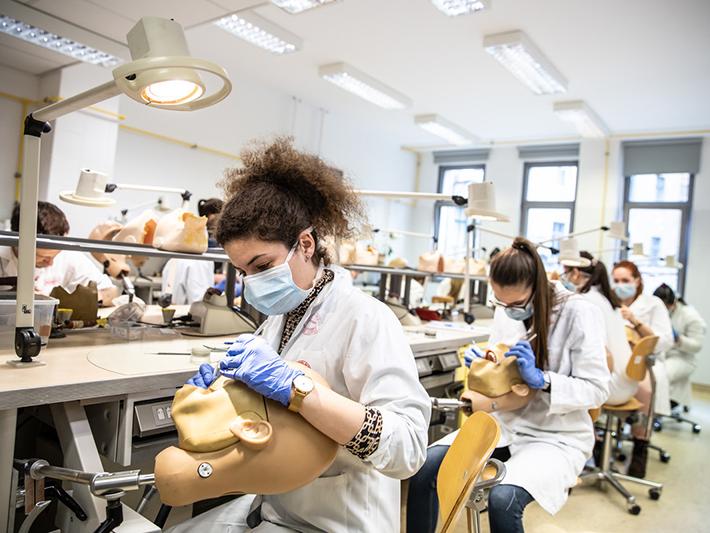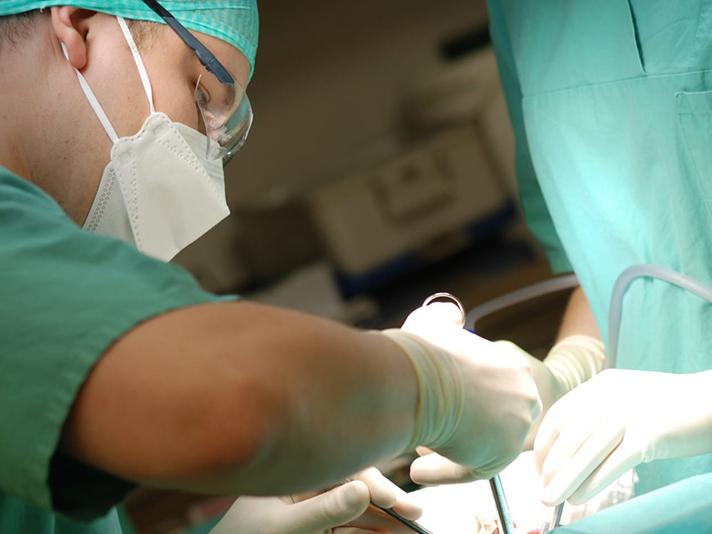
How to capture the attention of new generations of dentistry students
You may also like
Popular resources
“What a fantastic university lecture I delivered! Why did nobody seem to be interested?”
Every university lecturer must have had this experience during their teaching career. Now the digital revolution, with its easy access to large amounts of information and a change in students’ attitudes to learning, calls for further reform of teaching methods.
Here, we share changes we have initiated to capture and sustain students’ interest and attention both inside and outside the classroom, using a course that has evolved over 20 years as a case study.
Declining student interest at lectures despite staff efforts
Gnathology, a branch of dentistry that deals with the masticatory system, was introduced as a separate subject at Semmelweis University two decades ago. It was taught with an approach that suited the spirit of the times: one lecture and two practical credits per week.
- Read more: an inter-university and interdisciplinary approach to dental education
- THE podcast: human connection and the student experience
- Resource collection: back to the basics of pedagogy
The lectures have continuously changed since the beginning; at first, we developed our own curriculum, modelled on the curricula of foreign universities. When the lecturers wrote a university textbook, this helped shape and modernise the emerging curriculum. But even before the publication of this book, the syllabus was based on scientific papers by the course leaders.
However, despite a competent and committed team of instructors, as well as topics and resources to address the demands of the 21st century, the number of students attending the lectures fell gradually. An important factor was that due to a change in university regulations, which was requested by students, attendance at lectures was no longer compulsory. When we returned after the Covid lockdown period, the average attendance rate dropped to 14 per cent in the first semester, and only 5.5 per cent of students later watched the recorded lectures online.
Adding collaboration to practical education
Our seminars, on the other hand, have proved to be more successful. Continuous development of our toolkit – which includes facebows (which record the relation of maxilla to temporomandibular joint’s hinge axis), individual value articulators and digital motion analysers – has supported the design of practical courses. Post-pandemic collaborative work on exam topics, initially made necessary during distance learning, means each student works on two or three topics at home, then gives a presentation to the group and, after making the necessary corrections, makes them available to the others. Based on the teachers’ opinion, the students’ feedback and the results of the debriefs, this seems to be working, with great results.
Seminars that resonate with student behaviour
We converted the lectures into seminars in the spring semester of the 2022/2023 academic year, in response to falling attendance in the department of prosthodontics.
The ideal seminar size is about 20 students, but we did not have enough staff members to split the 80 to 85 students studying in Hungarian into four groups. So, we halved the number of face-to-face and contact hours and created the same number of self-paced online learning modules. This reduced the number of parallel seminars to two. Coupled with this was the equally significant task of developing seven new online learning materials.
The seminars were not mandatory, but attendance rose to 58 per cent and access to the online resources increased to 50 per cent. The former represents a fourfold increase over the previous term, the latter a tenfold increase. Overall, the huge amount of work invested seems to be paying off, and this form of teaching has been expanded to all subjects taught in the clinic during the past academic year.
What’s wrong with the traditional front-facing lecture?
Universities are already seeing change in their centuries-old traditions. Knowledge is no longer primarily accumulated within the walls of the university. Seemingly limitless information is available from almost anywhere in the world via the internet, and the university lecturer is not the sole possessor of knowledge. Instead, they assist students in recognising sources and differentiating between those that are trustworthy and those that are illegitimate.
The situation is made more difficult by the fact that there are fewer and fewer truly exceptional professors who deliver lectures in the conventional manner. Due to increasing specialisation and lack of time, a given subject’s lectures are shared among three or more lecturers. This means that the concept of a single lecturer over the course of the semester is lost. The routine of the experienced instructors who can emphasise the main points is often replaced by less focused, overly detailed presentations by young speakers.
PowerPoint has become the dominant tool for frontal presentation, but the pre-made slides cannot convey the experience of an idea being born. The audience no longer sees the flow of ideas on a whiteboard – just as a tin of food cannot compete with a freshly prepared meal.
On the student side, members of generations Z and Alpha are sceptical; they don’t believe in authority, not even in the omnipotence of the professor. They are extremely fast, but sometimes process information superficially. They prefer to go at their own pace, rather than follow the rigid timetable of a classroom. They can often learn much more effectively at the time of their choice.
How can we adapt to our students’ changing habits?
Our answer is a hybrid approach to teaching, combining a free-choice, individualised approach with a more structured form of attendance.
In the former, we try to find and prepare the appropriate teaching materials for each type of student: we make extensive use of videos, recorded short presentations, images and text material. They are carefully selected and structured to provide information accessible to all.
In the classroom, we include time for group work so we can apply what we have learned. We provide opportunities for two-way communication rather than one-way transfer of information. Emphasis is placed on teacher’s feedback: diagnostic, summative and developmental assessment, preferably in text form, with guidance for further learning, reinforcement and support.
For us, the initial experience shows that it is worth changing, innovating, learning and using new tools and methods in higher education. But the most important thing is to start from the premise that today’s students are just as enthusiastic and ambitious as we were back then. If they remain unmotivated, we may not be teaching them in the right way.
Máté Jász and Szandra Körmendi are senior lecturers, and Szilvia Ambrus is a clinical specialist, all in the department of prosthodontics; Péter Schmidt is vice-head of the department of prosthodontics; and Péter Hermann is vice-rector of education and head of the department of prosthodontics. All are at Semmelweis University, Budapest.
If you would like advice and insight from academics and university staff delivered direct to your inbox each week, sign up for the Campus newsletter.




